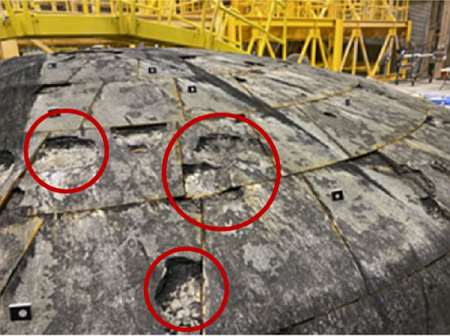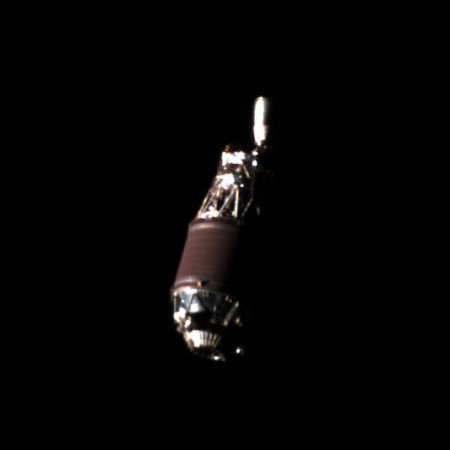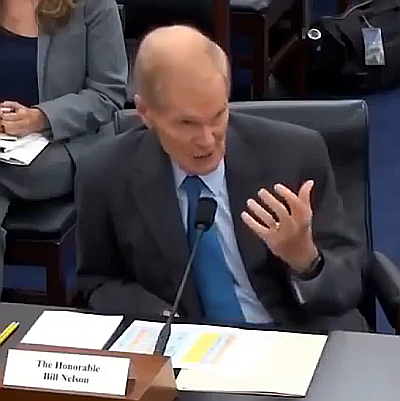NASA IG: Major technical problems with Orion remain unsolved

Damage to Orion heat shield caused during re-entry,
including “cavities resulting from the loss of large chunks”
A just released report [pdf] by NASA’s inspector general has found the major technical problems discovered after the first unmanned Artemis mission of Orion around the Moon remain unsolved, and threaten the safety of the astronauts that NASA plans to send around the Moon on the second Artemis mission.
The problems with Orion are threefold and are quite serious, involving its heat shield, separation bolts, and power distribution.
Specifically, NASA identified more than 100 locations where ablative thermal protective material from Orion’s heat shield wore away differently than expected during reentry into Earth’s atmosphere. Engineers are concurrently investigating ways to mitigate the char loss by modifying the heat shield’s design or altering Orion’s reentry trajectory.
In addition, post-flight inspections of the Crew Module/Service Module separation bolts revealed unexpected melting and erosion that created a gap leading to increased heating inside the bolt. To mitigate the issue for Artemis II, the Orion Program made minor modifications to the separation bolt design and added additional thermal protective barrier material in the bolt gaps.
NASA also recorded 24 instances of power distribution anomalies in Orion’s Electrical PowerSystem. While NASA has determined that radiation was the root cause and is making software changes and developing operational workarounds for Artemis II, without a permanent hardware fix, there is increased risk that further power distribution anomalies could lead to a loss of redundancy, inadequate power, and potential loss of vehicle propulsion and pressurization.
Moreover, like with any engineering system, without understanding the residual effects of introducing design and operational changes, it will be difficult for the Agency to ensure that the mitigations or hardware changes adopted will effectively reduce the risks to astronaut safety.
This is not all.
» Read more

Damage to Orion heat shield caused during re-entry,
including “cavities resulting from the loss of large chunks”
A just released report [pdf] by NASA’s inspector general has found the major technical problems discovered after the first unmanned Artemis mission of Orion around the Moon remain unsolved, and threaten the safety of the astronauts that NASA plans to send around the Moon on the second Artemis mission.
The problems with Orion are threefold and are quite serious, involving its heat shield, separation bolts, and power distribution.
Specifically, NASA identified more than 100 locations where ablative thermal protective material from Orion’s heat shield wore away differently than expected during reentry into Earth’s atmosphere. Engineers are concurrently investigating ways to mitigate the char loss by modifying the heat shield’s design or altering Orion’s reentry trajectory.
In addition, post-flight inspections of the Crew Module/Service Module separation bolts revealed unexpected melting and erosion that created a gap leading to increased heating inside the bolt. To mitigate the issue for Artemis II, the Orion Program made minor modifications to the separation bolt design and added additional thermal protective barrier material in the bolt gaps.
NASA also recorded 24 instances of power distribution anomalies in Orion’s Electrical PowerSystem. While NASA has determined that radiation was the root cause and is making software changes and developing operational workarounds for Artemis II, without a permanent hardware fix, there is increased risk that further power distribution anomalies could lead to a loss of redundancy, inadequate power, and potential loss of vehicle propulsion and pressurization.
Moreover, like with any engineering system, without understanding the residual effects of introducing design and operational changes, it will be difficult for the Agency to ensure that the mitigations or hardware changes adopted will effectively reduce the risks to astronaut safety.
This is not all.
» Read more










